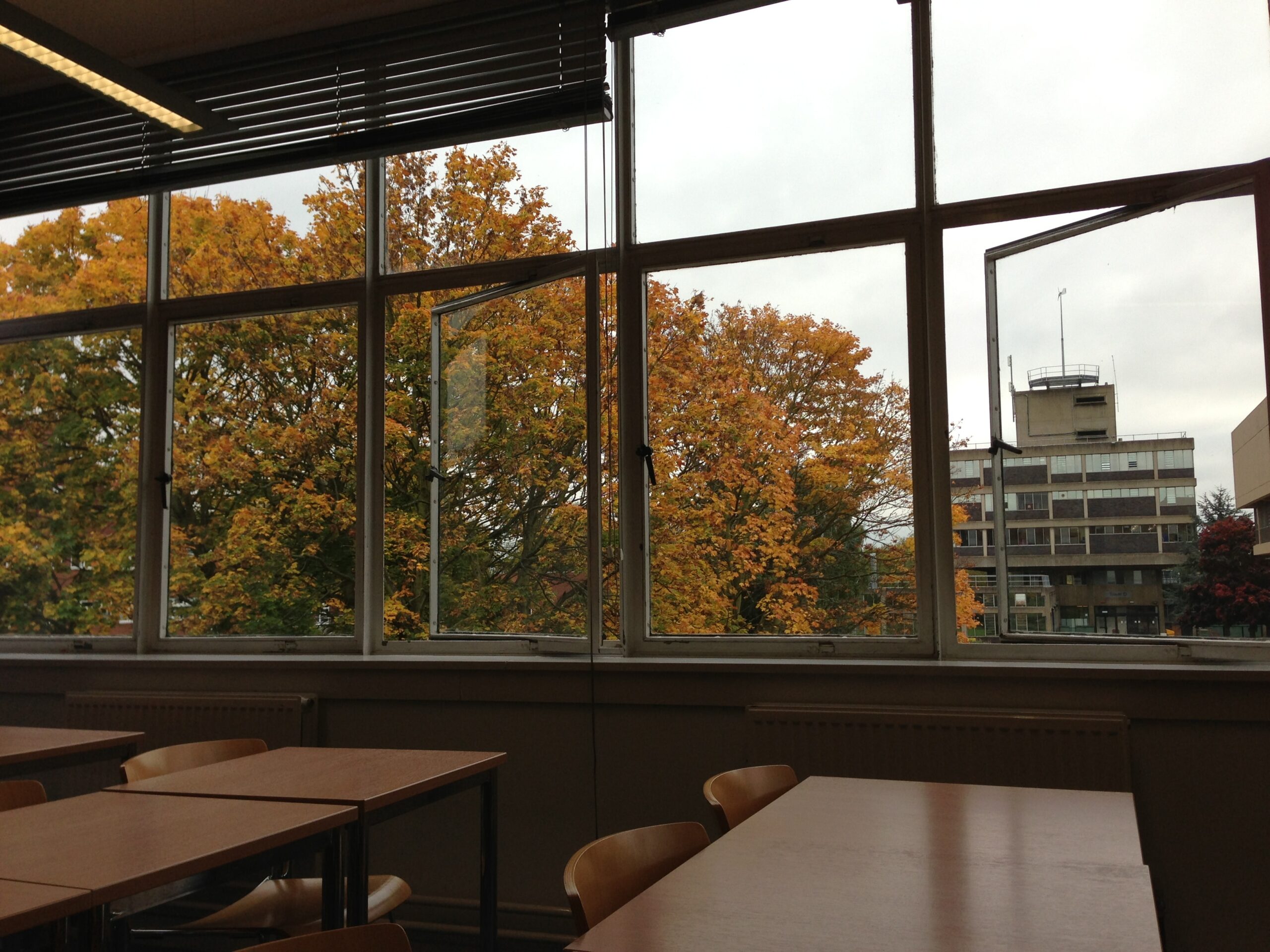
For many schools the last two years have posed huge challenges in maintaining comfortable, healthy learning environments. First the focus on ventilation post lockdown, then huge heating bills over the last winter, as well as coping with extreme weather events.
Typical secondary school energy bills can now exceed £100,000 per year. At the same time the impact of climate change and extreme weather events means more energy is used to deliver comfortable classrooms. Suddenly, careful management of the school estate and facilities can produce significant paybacks in energy efficiency.
The impact of environment on learning and health
Energy efficiency matters because indoor environment matters in teaching. For decades research has confirmed most teacher’s belief that the environment in a classroom – especially the temperature and air quality – has significant impact on learning outcomes.
An extensive study from Cornell demonstrated the impact of temperature on employee performance – where lower temperatures are linked to a rise in mistakes and accuracy.
In education, the National Bureau of Economic Research compared test scores for 10 million students and 14 years against average daily temperatures. A 1°C hotter year correlated to nearly 2% lower test scores, but only in schools without climate control. Extremes of temperature (years with days over 38°C) added an additional 0.5% reduction.
Associate Professor Joshua Goodman was clear: ‘Our evidence suggests that heat not only interferes with the physical capabilities of a nation’s workforce but also with its cognitive capacities, and most crucially the rate at which valuable skills are accrued over time.’
So, the problem isn’t just that if you are hot or cold you feel uncomfortable. The problem is that when you are out of the comfort zone you are distracted. If cold you will use a substantial amount of your energy to try and keep warm. If warm your working memory, information retention and processing are all impacted.
Consequently pupils will have less resource for concentration, inspiration and focus. Which not only impacts pupils ability to learn, but also teacher’s abilities to maintain high performance.
Acceptable CO2 in classrooms
Just as with temperature, many years of research has confirmed the relationship between levels of CO2 indoors and ability to think, take in and recall information.
A Danish study showed CO2 levels impact speed at which number and language tasks can be performed. This is an international issue – a similar study of elementary schools in Texas found that mathematics and reading scores improved by 2.9% and 2.7% respectively, when ventilation was increased.
For staff productivity, the results are comparable. A Harvard paper showed that investing $40 per person, per year in improved air quality produced a $6,500 productivity benefit for each employee.
Broadly, where CO2 levels in schools are high, it could be causing tiredness, lower concentration, and underperformance among students and staff. High levels of CO2 are also a ‘canary in the coal mine’ for a risk of other health issues. The low levels of ventilation that allow a CO2 build up are perfect conditions for the spread of airborne viruses such as COVID, influenza, measles and chickenpox.
Overall, understanding the CO2 footprint in your school will help make better decisions to build a healthy productive environment in which to learn and work.
How to plan for better energy efficiency in schools
Indoor environment has a big impact on delivering learning. So it follows that improving energy efficiency must start with finding ways to reduce energy wastage without compromising indoor environment. Identifying even a 15% reduction in energy usage for a typical larger school can release £15,000 of funds – a good chunk of a TA salary, or potential investment in insulation.
In many schools – especially with older estates – there are quick wins available from ensuring that heating and ventilation matches the operation of the school. Simple questions can yield big savings. Is the heating operating even when the school isn’t occupied? Is too much ventilation causing problems in maintaining a comfortable temperature? Which facilities are overheated or heated for too long?
A good monitoring solution answers these questions and unlocks opportunities for saving through fine tuning the operation of the school. Monitoring can also:
– confirm that new systems are performing as proposed
– highlight facilities or systems that might need improvement and justify the spend
– demonstrate good ventilation for staff reassurance and supporting time tabling
Getting results from monitoring with Purrmetrix
Purrmetrix award winning monitoring solutions make it straightforward to collect and analyse indoor air quality data with a simple process:
– Baseline current status
Working with your facilities team or contractors, Purrmetrix installs wireless temperature, humidity and CO2 sensors in your classrooms and facilities to collect real time data on air quality. Set up is quick, secure and unobtrusive.
– Identify easy wins
A few weeks of data will normally be enough to reveal opportunities for energy savings; where heating systems are over running, where unoccupied classrooms are heated, where more or less ventilation is needed. For schools it will help build the case for investment in better ventilation or insulation systems, or alternatively whether they can rely on staff managing the environment in class.
– Confirm performance from upgrades
Continued monitoring before and after any interventions allows the school to assess what works and what doesn’t. As energy bills come down, are classrooms still warm enough? Has the new ventilation system delivered enough fresh air? Do the heating controls really reflect how the art department is used?
As the new school year kicks off, school leaders looking for ways to manage their costs and facilities now have more power than ever to make the right decisions. If you would like to know more, download our case study below, or get in touch for a discussion about what your school might need.
